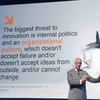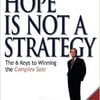If your channel program is white-label or is dependent on MSPs and other channel partners, let us take a look at the economics for a moment.
First, white-label gets some up-front money for customization. But then there is this lag while the white-label partner (hence called WLP) works out the kinks in pricing and deployment; puts billing and workflow in place; trains salespeople and internal folks; orders CPE then tests CPE; trains tech folks for support, implementation, configuration; then launches the product. Sales trickle in (maybe) 90 days later. That is a big lag between inking the deal and getting the first sale.
If the WLP is serious about the product, then a sales compensation plan has been devised to create a fast start and hopefully sustained sales. Now if the WLP is an RLEC, their territory has a finite number of prospects. You will get 10-15% of that base in the first year. Is that sufficient revenue for all of the work of creating a white-label program, putting together a portal, and chasing (and landing) WLPs?
Now MSPs are similar to the WLP, since many managed service providers want white-label. Again, there will be a lag before you see sales come in. Again it will be 10-15% of the account base.
If the MSP is just a sales partner - and they are not incorporating the new product into their package, the sales will be quicker but less.
There are a number of factors for success. The number of accounts the partner has currently is the biggest determination. Next is the sales force question - do they have a sales team? How will they be compensated to sell the new product? Will there be an overlay person or will the vendor provide the overlay? How much training will the sales team get on the product? Will they be comfortable selling it? Are they confident that the product can be provisioned without hassle? No one wants to lose a customer over a white-label product. [I see this in HPBX sales all the time. Network is easy to sell, easy to install most of the time. Voice as a Hosted VoIP solution has many moving parts and Porting!!! (Porting still sucks in the US! And some CLECs should just reject orders that require a port since they CAN NOT DO IT!!!! *cough* cough* birch *cough*).
Another factor is the ordering process for the sale. When the product is sub-$300, it needs to be a frictionless ordering process. Not spreadsheets and pdfs, printing, signing, faxing. The site surveys!!! This is 2015 - we have smartphones that are smarter, faster and do more than the database from 1984 that is still being used at many carriers. Um, Oracle or IBM or SAP would be more than happy to upgrade that database and link in other data for you.
Is the product aligned with what the sales team sells now? If not, how should that conversation go? For example, if I am used to selling bandwidth, I have an opening, questions to ask, etc. A comfort level with the whole process. Now with this new product - conferencing, backup, cloud services, hosted PBX - moving parts, uncomfortable, no idea how to start that conversation or even how to prospect for it. Why do people buy it? What is the pain point? How do I identify the the best prospects and best targets?
You have to teach them how to fish all over again. Is that covered in your program?












